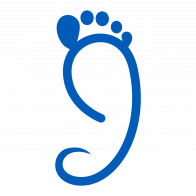How to Circumvent the Pilot medical
Pilots are often intimidated by the medical process, and rightly so. A misstep in choosing or processing a medical could be disastrous for your dreams to be a pilot. If you have a disability or medical condition, I’m not actually saying you can truly circumvent the medical. But there are some options open to you.
Stepping Down, not out
If you think you will be denied during your next medical, you can always step down to a less restrictive medical. Just don’t get that denial! It may have fewer privileges, but you can still fly, right?
This is also an option if you think you may acquire a medical condition in the future, but you still want that Private Pilot Certificate in the short term. (Just don’t get denied!)
Besides just stepping down to a lower-tier medical, two options to keep in mind are BasicMed and Sport Pilot.
BasicMed was developed in partnership with AOPA to help Private Pilots keep flying the airplanes they already own (up to 6 seats). The requirements are not as rigorous as the Third Class medical. Still, you will need to see your physician for an evaluation.
Most any kind of powered airplane pilot can automatically default to Sport Pilot privileges. That is, provided they have never been denied a medical and have a valid driver’s license. Just make sure you’re in the right airplane and following the restrictions.
Start at the Bottom
This is an excellent option for new pilots. Why worry about being denied a medical when you can start without the medical at all? Sport Pilots need a valid driver’s license to act as their medical. The Light Sport Aircraft (LSA) market has exploded in recent years, so there are many aircraft available, and some CFIs specialize in this kind of training. There are a few caveats; like mentioned above, you cannot have applied for a medical and been denied.
Glider and Free Balloon pilots can also get around the medical because they don’t need one! You will need to meet with the FAA at your local Flight Standards District Office (FSDO) to certify that you can fly safely. “Safe” can be open to interpretation by you, your CFI, and the FSDO, so be prepared.
Face it head-on
There are ways to get a Third Class Medical (or higher) with a disability. Generally, this starts when your Aviation Medical Examiner (AME) can’t immediately sign off on your medical. Instead, they will issue a deferral to the FAA to make a decision. The FAA can then direct your local FSDO to complete a Statement of Demonstrated Ability (SODA) or a Medical Flight Evaluation (MFE). Be sure your AME is willing to support you along the way.
The danger here is that the FAA could simply deny your application for a medical, which then bars you from all of the options above. There is an appeals process, but it is long and fraught with difficulty.
Solo isn’t the only option
Flying is fun no matter who else is in the airplane with you! If you feel that you cannot successfully navigate the requirements for becoming a pilot, see if some local pilots will take you with them on their travels. You can also book periodic time with a CFI and stay a forever student pilot. Join local pilot groups and see where your creativity can take you!
Good luck, and fly safe!
Disclaimer: we at Rightfooted Foundation are not lawyers and nothing herein should be considered legal advice. Also, these things change with time. Go speak with someone who knows all the details and is up to date before taking any action.

